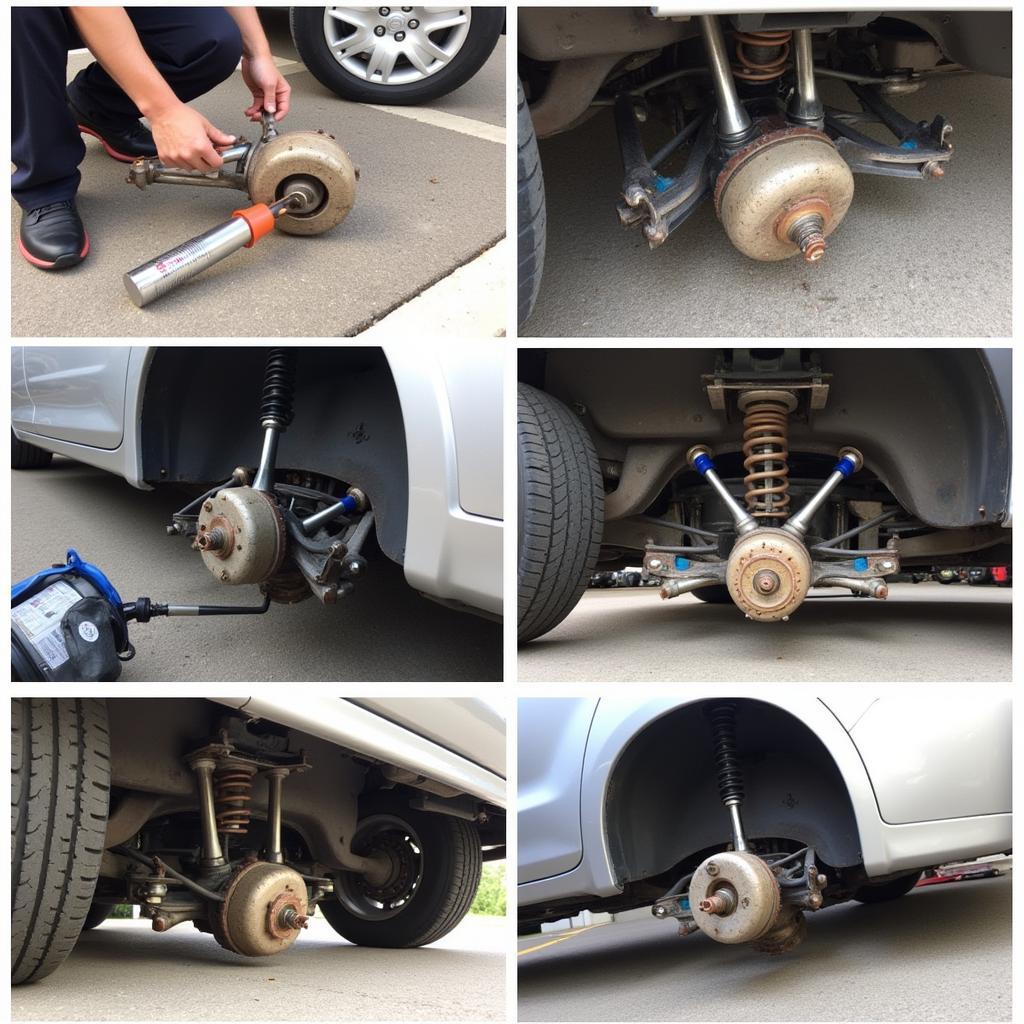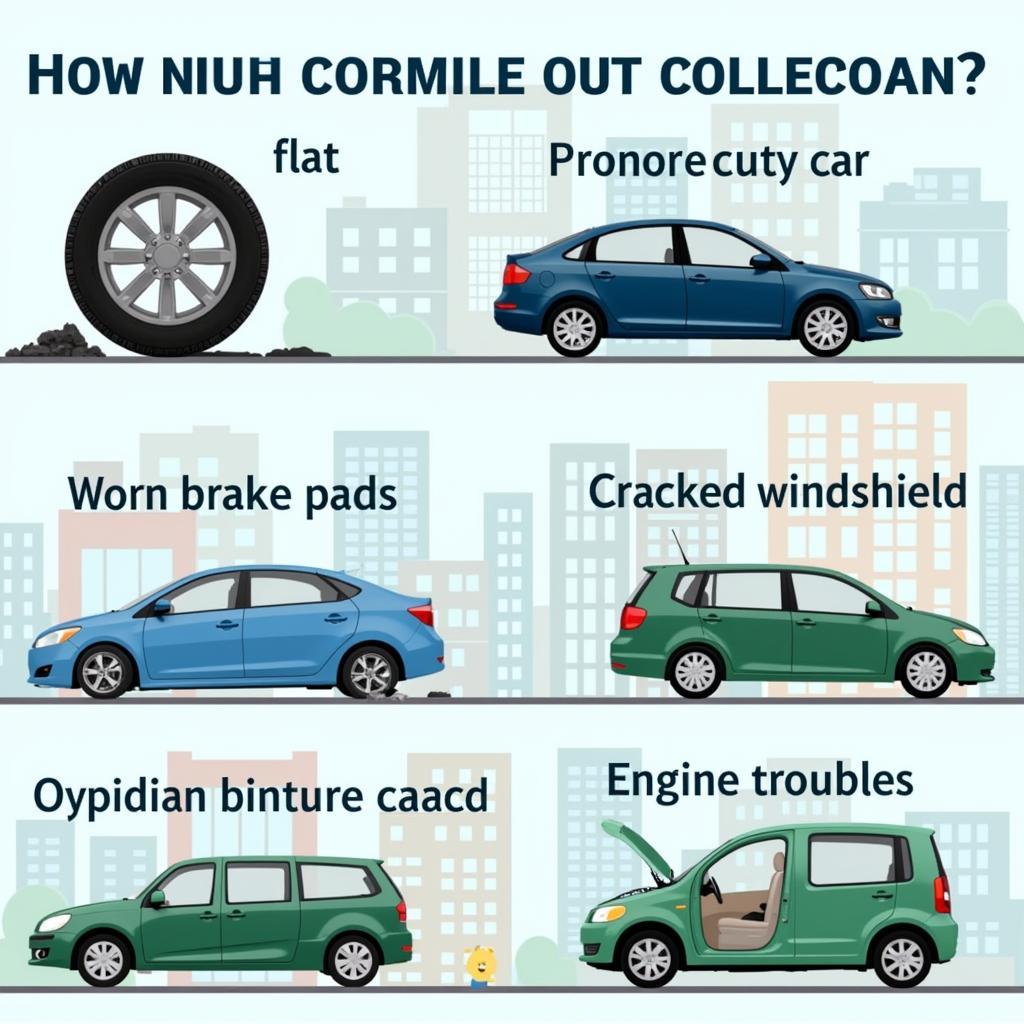Fixing a hole in your car body can seem daunting, but with the right approach and a little elbow grease, you can often tackle the repair yourself. Whether it’s a small ding from a rogue shopping cart or more significant damage from rust or an accident, understanding the process of How To Fix A Hole On Car Body is essential for maintaining your vehicle’s appearance and structural integrity. Let’s dive in and explore the best methods for patching up those pesky perforations.
Identifying the Hole and Assessing the Damage
Before you start fixing a hole in car body, you need to identify its location, size, and cause. Is it a small puncture, a larger gash, or rust-related damage? Knowing the extent of the damage will dictate the repair method. A tiny hole might only require body filler, while larger damage necessitates patching with sheet metal.
Gathering Your Tools and Materials
Having the right tools and materials on hand will make the repair process smoother. Depending on the size and type of hole, you’ll likely need some combination of sandpaper, body filler, a body filler spreader, masking tape, primer, paint, clear coat, sheet metal (if patching a larger hole), a welder or adhesive (for attaching patches), and safety glasses and gloves.
Repairing Small Holes with Body Filler
For small holes, body filler is your go-to solution. Clean the area around the hole thoroughly with sandpaper, removing any rust or loose paint. Mask off the surrounding area to protect the undamaged paint. Mix the body filler according to the manufacturer’s instructions and apply it to the hole, using a spreader to smooth and feather the edges. Allow the filler to dry completely, then sand it down until it’s flush with the surrounding body panel.
how to fix a small hole in the car body
How to Fix a Larger Hole in a Car Body
Larger holes require a more involved approach. You’ll need to create a patch from sheet metal, cutting it slightly larger than the hole. Then, weld or adhere the patch to the damaged area, ensuring a secure bond. Once the patch is in place, you can apply body filler to smooth out the repair, just like with smaller holes.
Priming and Painting the Repaired Area
After sanding the filler smooth, apply a coat of primer to prepare the surface for painting. Once the primer is dry, apply several thin coats of paint, matching the color of your car. Finish with a clear coat to protect the paint and give it a glossy finish.
how to fix small holes in car body
Can All Car Dents Be Fixed?
While most dents and holes can be fixed, the feasibility and cost depend on the severity of the damage. Minor dents and small holes are usually straightforward DIY repairs. However, extensive damage, especially to structural components, might require professional attention.
Fix Rusty Car Frame
Rust can cause significant damage to a car body, including holes. Addressing rust requires removing the affected area and applying a rust inhibitor before patching or filling the hole.
“When it comes to rust repair, prevention is key. Regular washing and waxing can significantly extend the life of your car’s body,” advises John Smith, Automotive Engineer at Smith Auto Solutions.
“Remember to always wear proper safety equipment when working with automotive repair materials,” adds Sarah Jones, Lead Technician at Jones Auto Repair. “Safety glasses and gloves are essential.”
In conclusion, fixing a hole on car body can be a manageable DIY project or a more complex repair requiring professional help, depending on the extent of the damage. Understanding the process and using the right techniques will ensure a successful and long-lasting repair. Remember, a well-maintained car body not only looks good but also protects your vehicle from further damage. If you need further assistance or have any questions, connect with us at AutoTipPro. Our office is located at 500 N St Mary’s St, San Antonio, TX 78205, United States, and you can reach us by phone at +1 (641) 206-8880.






Leave a Reply